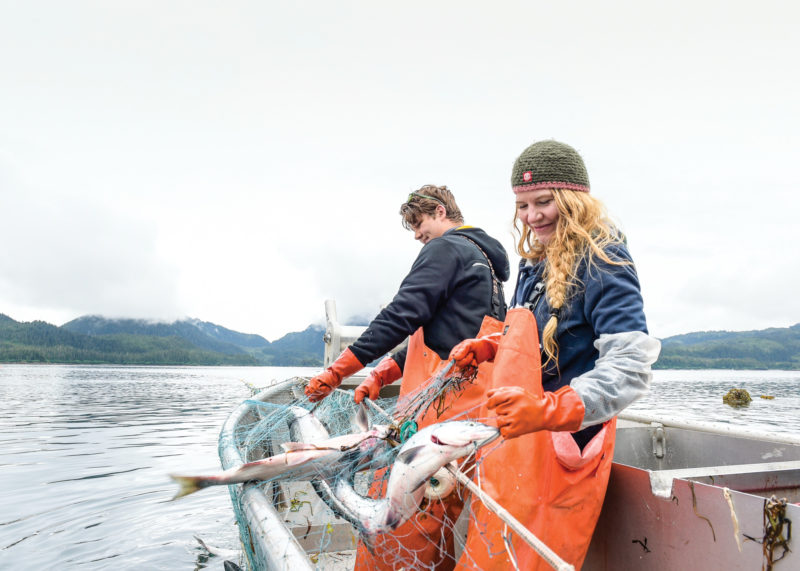Wild Alaska Salmon had quite a year in 2018. Some management areas hardly put their nets in the water, while others couldn’t make room onboard for all the salmon in their gear. Here in Area E Copper River and Prince William Sound districts, fishermen were pleased with the Alaska Department of Fish and Game season forecast. However, they also know that it is just that — a forecast. Similar to a weather forecast, what materializes may be entirely different.
The Copper River District was one of those in 2018 that barely saw any commercial harvest of those famous early season king and sockeye salmon. With low early returns of sockeye ADF&G used their primary management tools of conservative time and area closures to limit commercial access during traditionally peak harvest weeks. The early closures forced many fishermen to dig out gear more appropriate for the deeper blue waters of Prince William Sound, and further, to decide whether to target sockeye or pink salmon.
Over the past couple of years, the Copper River Prince William Sound Marketing Association has been positioning the Prince William Sound salmon brand for an opportunity to gain recognition in the marketplace. The extended closure in the Copper River District provided that opportunity. Quality handling is more important than ever across the entire Alaska seafood industry and is a key element of the work fishermen are doing to add value to salmon coming out of Prince William Sound. Prince William Sound sockeye were in high demand from retailers that had Copper River sockeye orders go unfilled. Upscale restaurants in Seattle and Los Angeles offered big, bright Prince William Sound Keta as specials on their menus, further diversifying the premium wild Alaska salmon brand. Looking back at the ADF&G season summary, it is evident that value was gained by Prince William Sound salmon across species.
Commercial fishermen in Alaska harvest the surplus of wild stocks, and without a surplus of sockeye in the Copper River District, time was limited. By August, with the sockeye escapement met and silver salmon management in place, commercial harvest in the district once again commenced. Copper River Coho are the last great wild Alaska salmon of the season and last year silvers came in as big and beautiful as ever and demanded great prices for the Copper River gillnet fleet. Silvers have been a significant factor in the value of the total harvest over the past several seasons and this trend is expected to continue as early inquiries into Copper River Coho were fielded at Seafood Expo North America in Boston in mid-March.
The commercial fisheries in Area E continue to diversify. This spring a tanner crab fishery in Prince William Sound resumed for the second year in a row after a decade-long hiatus. In April we were expecting a commercial shrimp season again after several years of closure. We expect to see high demand for the early season salmon in the Copper River District if the forecast is accurate. And we look forward to increased interest in Prince William Sound sockeye and pinks. Silver season on the Copper River flats seems far away, but before we all know it we’ll be armchair quarterbacking the wild Alaska salmon season once again.







